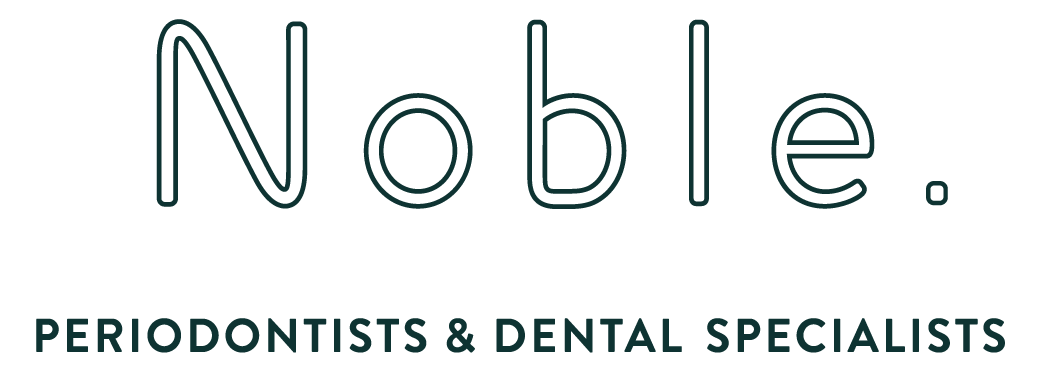Technology at Noble - what can you expect?
One of the things we get really excited about at our practice is learning all about the technology - new and old - that we use every day. From x-ray machines, to cameras less than a millimeter wide, technological advancements have contributed hugely to the dental profession over the last century.
Panoramic and Periapical Radiographs
Or as you might know them, x-rays. X-ray imaging has come a long way since its discovery in 1895, which was actually an accident (as many discoveries seem to be!) In dentistry we commonly use two main types of x-ray imaging. The panoramic x-ray - which is a 2D image created by standing the patient in a large machine that spins around their head, projecting a beam through their mouth and onto a film opposite. It builds an ear to ear image of someones’ jaw.
The other type is the periapical x-ray - which is where the patient has a sensor inside their mouth, and the beam is smaller and more focused - providing more detail of smaller areas inside the mouth.
Both types of x-ray imaging are extremely useful when treating patients who are having difficulty with their gums, as bone loss is a major indication of gum disease. We also tend to take periapical x-rays of dental implants once we have placed them, so we can compare and contrast the bone density between the time of surgery, and after the healing process has taken place.
Cone Beam Computed Tomography (CBCT)
A slightly newer technology, CT scans were developed in 1972 by the engineer Godfrey Hounsfield and the physicist Dr. Allan Cormack. A key difference between a regular CT scan, and the CBCT machine that we use in our practices, is that patients are exposed to much lower radiation levels.
Practically speaking, CBCT scans allow us to get a 3D image of the patient's teeth and bones in their mouth, which is ideal when planning for dental implants. The image means we can provide a fairly accurate prediction of what will happen when we operate, and can measure exactly how much space we have side to side, front to back, and top to bottom. It also gives a clearer picture of what our proximity will be to the sinuses, nerves, and other teeth in the area.
Perioscopy
Perioscopy is a relatively new technology for gum treatment, invented and developed within the last 25 years as an alternative to ‘flap surgery’, where the gums are cut back from the teeth for deep cleaning and then stitched back down. The dental endoscope is a tiny fiber optic bundle that provides the clinician with a closeup image of the calculus under the gums, meaning no surgery is required for the clinician to deep clean the teeth. We have been using perioscopy for around twenty years, and are thrilled with the success we have seen in so many of our patients.
We hope you learnt something about the technology we are so passionate about at Noble - we’ll see you next time!

